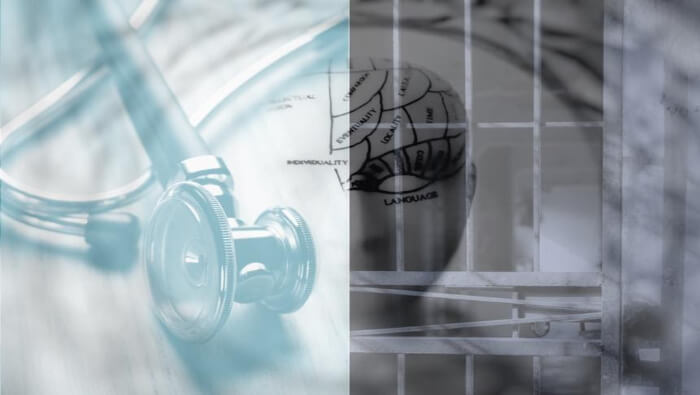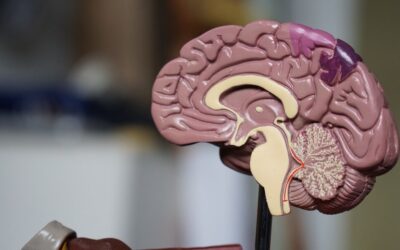Criminal psychology has experienced a surge in popularity in recent years, thanks in part to gripping true crime documentaries that have captured the public’s imagination. Alongside these captivating stories, psychology books and famous experiments in psychology have also piqued the interest of many, leading to a growing number of people eager to delve into the enigmatic world of criminal minds. In this article, we explore the reasons to study psychology, focusing on criminal psychology, and why it’s so important to have dedicated researchers in this captivating field.
The Fine Line Between Criminal and Patient
Imagine a typical family man: happily married for several years and well-known in the community for his kind personality. We’ll call this man Harold.
One day, Harold changed.
He began attacking co-workers, people he met on the streets and even his own family. And he showed no remorse. As his offences escalated, he was arrested and convicted for a host of crimes – only to continue his aggressive behaviour towards fellow inmates and staff.
The once-kind Harold had disappeared entirely, replaced with a true criminal – but something else had changed too. Harold developed difficulties walking and had bad headaches. As his condition deteriorated, he was rushed to hospital where brain scans revealed a massive tumour in his forebrain. In an emergency operation, doctors removed the tumour. Soon after, Harold’s headaches subsided – and so did his aggressive behaviour. He returned to being the kind person he’d been before.
Harold’s story is not entirely true, but a similar case took place in the US with a man’s offensive behaviour subsiding after a brain tumour was removed – twice.
Perhaps the behaviour of Charles Whitman, a man convicted of murdering 16 people in Texas in 1966, was driven by a similar brain anomaly. Whitman’s brain tumour was only discovered in his autopsy.
These are just anecdotes, but they could foreshadow a revolution of the criminal justice system as we know it. The major question might no longer be: ‘Who is the criminal?’ but rather ‘What makes a criminal?’ Is it the brain or the action? Where do we draw the line with criminal psychology?
Understanding Behaviour Through Neuroscience
Let’s take a step back. The stories mentioned above could suggest that changes to brain anatomy are the primary reason behind antisocial behaviour, and this is not necessarily incorrect. We know that even small changes to the brain can shape behaviour.
Targeted stimulation of certain brain areas can make muscles twitch, or stop involuntary movements such as in Parkinson’s. Even neural drivers for complex behaviour have been pinned down: if areas of a rat’s brain associated with reward and motivation are stimulated while the animal presses a lever, the rat will soon ignore food and water and just keep pressing the lever as if there was nothing else in the world.
Changing the workings of the brain can even affect personality and empathy. A historic case that showed this quite dramatically was the railroad worker Phineas Gage, who developed anti-social behaviour after his forebrain was punctured by an iron rod during an accident.
But can we connect the brain to a concept as broad as criminal psychology? Is there a neuronal fingerprint to the brain of a murderer?
Investigating the Biological Basis of Criminal Behavior
After the days of Phineas Gage, scientists began systematic investigations of structural brain changes in criminal psychology. Most findings fit well with the traits of antisocial and criminal behaviour.
A 2017 study found that, in patients with lesion-induced antisocial behaviour, the brain damage was located in areas that were part of the brain’s moral decision-making network. (1) A later study looked at a large group of over 800 incarcerated male criminals and found that those who had committed homicide showed markedly decreased grey matter – nerve cell tissue – in the frontal cortex, the part of the brain often associated with rational thinking and suppression of instinctive or compulsive behaviour. (4)
Studies looking at psychopathic criminals indicate abnormal development of both decision-making regions and reward centres in the brain. (5)
Findings like these only provide a glimpse into criminal psychology, but they share a common message: the identification of a neuronal fingerprint is more than science fiction – we’ve just not quite worked out the details yet.
It remains unclear how similar the pattern of a ‘criminal brain’ is across different individuals. Brains are as diverse as people themselves and are constantly changing throughout our lifetime depending on experiences, environmental influence and ageing. This makes it difficult to find markers that apply to everyone. Even then, any such markers would only ever signify likelihoods. They would not be able to identify someone as a definite past, or future, murderer.
Even so, we might encounter cases like Harold’s, where the driver for criminal behaviour is easily identifiable and, even more importantly, treatable. In the past, we would not have been able to identify, let alone remove a brain tumour. We can only imagine what will be possible in the future.
The more we understand about the brain, the more cases like Harold’s will be transformed from criminal into medical matters.
Balancing Accountability and Treatment in Criminal Psychology
Naturally, we do not blame someone with heart problems for not being able to run quickly. Similarly, patients with diagnosed psychiatric disorders are held to a low standard of responsibility. If we could diagnose a brain disorder in every convicted criminal, we surely should not hold them accountable either.
Or should we?
One possible, practical approach to this problem is common in many legal systems: As long as we cannot diagnose and treat the biological driver for a person’s criminal behaviour, they are withdrawn from society. The obvious problem with this approach is that, some years from now, we might look back and squint at the number of potential patients who were instead convicted and imprisoned as criminals.

Addressing the Ethical Challenges in Criminal Psychology
The more we learn about the brain, the more moral conundrums we will encounter. Rich Haridy in the ‘New Atlas’ puts it rather clearly: if we start to ascribe criminal behaviour to brain function beyond our control, why shouldn’t we do the same with altruistic actions and selfless behaviour? (5)
When it comes to the question of accountability, we should not forget that the concept of self and/or ‘free will’ does not disappear just because we learn how our decisions are driven. It might rather be the opposite: we will gain a greater understanding of how to treat each other and avoid jumping to conclusions about people’s motivations. And that is a good thing.
There will be some rather large moral questions and revisions ahead of us in light of this, however.
Once we have the means to correct behaviour through surgical intervention, who defines what is worth correcting? And should we intervene before a person commits murder? We will have to deal with these questions as the line between criminal and patient becomes increasingly blurry.
Harold’s case might seem exceptional now but, in reality, it could be just the tip of the criminal psychology iceberg.
Pursuing a Career in Criminal Psychology and Related Fields
- Interested in taking your study of the mind to the next level? Find out more about our Oxford Psychology summer school.
- If you’d like to read more great neuroscience content, take a look at our blog article on spatial mapping




